Integral in some way to every bathroom, tile does more than simply cover surfaces in the room. From protecting your home against water damage to laying the foundation for the style and design of the space, your bathroom tile has a more important job than you may realize. There are many different types of tile out there, many of which are more than suitable for use in the bathroom; learning about their differences will help ensure that you make the perfect selection for your home each and every time.
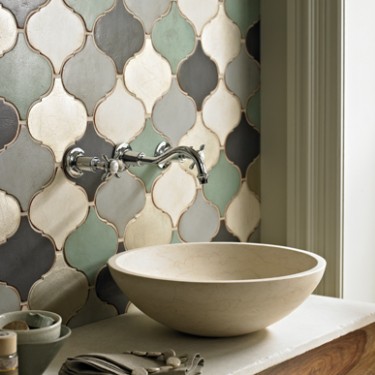 Beautiful Marrakech Bahia Tiles
Beautiful Marrakech Bahia Tiles
Bathroom Tile Material
When you enter a tile showroom, one of the first things that you may be struck by is how many different types of tile there are. From rustic to contemporary, tile can take on a number of different forms. You break these down into four broad categories to help make your search a little easier.
Consider the Tile Material
Material is the main factor that people normally consider when choosing bathroom tiles. We are all suckers for items that suit our taste preferences and n
These are some of the best tile materials that you can choose from depending on your budget and preferences. They are all flexible and can be installed on either bathroom wall or floor, depending on the level of durability.
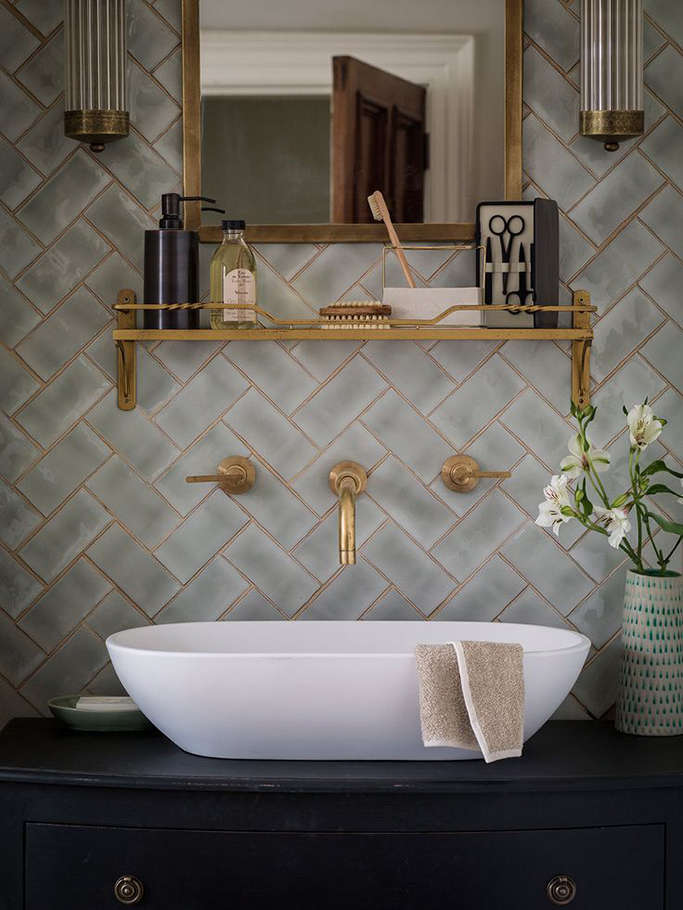 Image: Styled by Marisa Daly; photographed by Simon Bevan. Homes & Gardens, August 2014.
Image: Styled by Marisa Daly; photographed by Simon Bevan. Homes & Gardens, August 2014.
Ceramic Tile
Ceramic tile is one of the oldest and most well-known types of tile. Ceramic Tiles: They have the same material such as porcelain. But what makes them unique is they are not as finely ground as porcelain. They are a lot more durable than marble and if you install them correctly, you will definitely enjoy the finishing. A ceramic tile has a clay-base with a glaze on top, and it may be made in one of a few different ways:
- Monocottura is a tile that is fired only once, including the firing for the glaze. Terracotta tiles are often monocottura, and these tiles are usually not as strong or durable as other types; generally a monocottura tile is designated for wall use or light floor or counter use only.
- Bicottura ceramic tiles have been fired twice – once to create the body of the tile, and again after the glaze has been applied. A bicottura tile is much harder and more durable than a monocuttura tile, so it can be used on floors, walls, and countertops. Some bicottura tiles come with a matte or textured glaze that make them more suitable for floor use, and many of these come in a range of sizes.
- Crazed tiles are ceramic tiles that have a crackled glaze finish. This is done by forcing the glaze through a heating and cooling process that shocks the glaze into cracking. Keep in mind that while this glaze is beautiful, it does need to be sealed with an impregnating sealer if you use it in a wet area like a shower, because water can get right into those cracks and stain the ceramic tile behind them. Crazed tiles are not recommended for steam showers unless the clay body behind them has been vitrified, or is non porous. Any ceramic tile may craze over time. If this happens, simply apply a sealer to help prevent staining.
- Handmade or hand extruded tiles are ceramic tiles that are in some way produced by hand. They may be formed by pressing the clay into a mold or box, or they may be rolled out by machines before being hand cut and glazed. A handmade tile is likely to have some degree of variation not only in the size and shape of the tiles, but also in the color of the glaze. This is normal, and will require your installer to do a “dry layout” of the tiles before installing to balance the color and look for tiles that are extremely misshapen to use as cuts or edge pieces. Most handmade tiles are made for wall use only, but some may be produced for floor use as well; a good rule of thumb is to check the glaze, if it’s matte or textured in some way, it can generally be used on floors. If it’s glossy, keep it for wall use only.
Porcelain Tile
A lot of people confuse porcelain and ceramic tile, assuming that because both are made of clay, that they are variations of the same thing. Porcelain, however, is a much harder, stronger, more durable tile option that comes in a lot more finishes and styles than ceramic tile does.
Porcelain tiles are made of clay dust that has been compacted tightly together before being fired to extremely high temperatures. This renders the tile non porous, and extremely dense. A porcelain tile will not scratch or stain, and can be used anywhere in the bathroom without problem. This makes porcelain an excellent option in bathrooms used by small children, because it can be cleaned by anything and will never dull, scratch, or etch over time.
Porcelain tiles come in a few different varieties as well:
- Color-through is the most common type of porcelain tile. It has no glaze, but the color of the tile goes straight through; if you were to chip this tile, you would not notice a color difference like you would in a ceramic tile. Color-through tiles can be made to look like natural stone with lots of texture and variation, or they can be made to resemble things like fabric when the surface has been etched with a laser.
- Glazed porcelain is less common than color-through, but can produce some very interesting looking tiles. Porcelain tiles may be glazed with metal to give them an industrial look, or they could be glazed with veins or a subtle pattern to give the tiles a sheen and more realistic appearance. More durable than ceramic tiles, glazed porcelain does not craze, and is perfect for wet areas and steam showers, but it can get a little slippery underfoot.
- Polished porcelain is less common, but can give you a highly reflective, polished surface for your tiles that is even more brilliant than marble. Most polished porcelains are made to resemble marble or other stone tiles, but their finish never dulls or wears off making them perfect for high traffic areas.
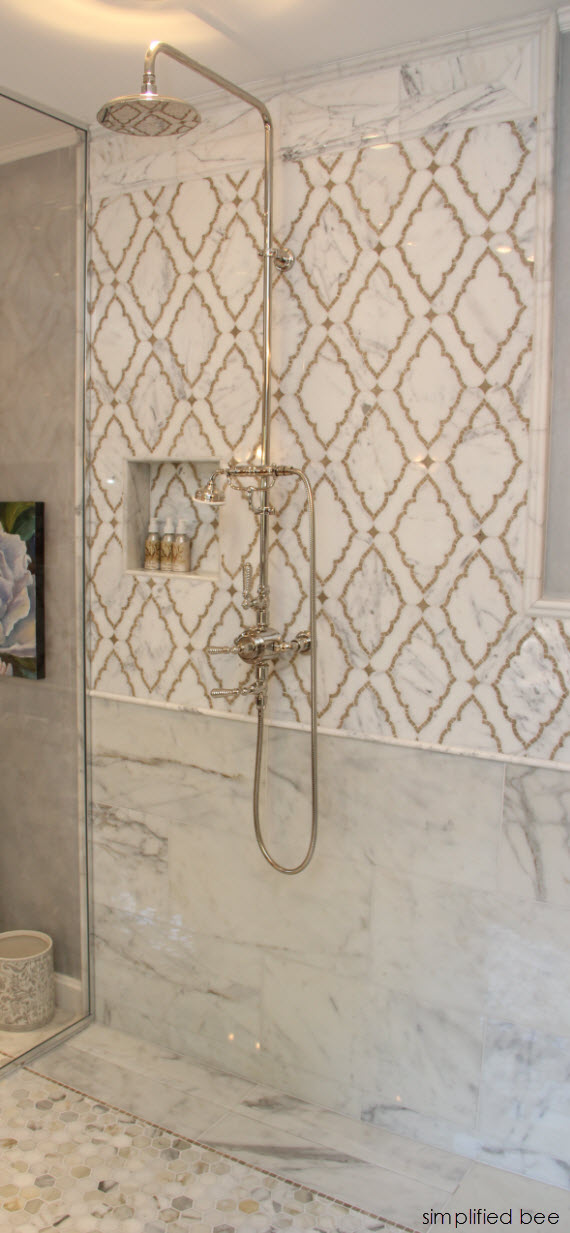 Lady’s Master Bath designed by Johnny Moallempour of MJM Interior Design
Lady’s Master Bath designed by Johnny Moallempour of MJM Interior Design
Natural Stone
There are a lot of different types of natural stone tile, many of which are perfect for use in the bathroom. The key to understanding natural stone tile is to know that the finish of the tile in no way impacts its durability, but the chemical makeup of that particular piece of stone does. For example, many people believe polished stone to be more durable than honed, but in fact both finishes wear the same if put on the same type of stone. On the other hand, a polished granite tile will always wear better than a polished limestone, which is softer.
All natural stone tile, regardless of type needs to be cared for in the bathroom. Always seal your stone with an impregnating sealer to help prevent it from absorbing water and staining. Use a squeegee in the shower to dry the walls after use to help prevent water spots, and always wash your stone with a PH neutral cleanser to help preserve its finish. Never use a natural stone in a steam shower; no matter how well you seal it, the steam could still penetrate the pores of the stone and stain it over time.
Not every stone wears the same in the bathroom, however; understanding when and where to use a specific stone can help you preserve the look of your bathroom tile longer:
- Granite is one of the hardest stones, but one of the least frequently used in the bathroom.
Typically found in a 12-inch tile, granite will almost always have a highly polished surface, but some types can come in a honed or flamed finish as well. Some granites, like Absolute Black, require no additional care, but most will need sealing when used in the bathroom.
Image: lowe’s
- Marble is softer than granite, but still highly durable for most areas of the bathroom.
Marble tile can be found in nearly any size or shape from mosaic to 36-inch squares, and can be found in nearly any finish from tumbled to highly polished.
Marble is very porous and can stain or etch easily if you don’t take care. Wipe up toothpaste spills quickly to prevent dull spots from forming on the surface.
You may also want to avoid marble in bathrooms with small children, as any potty misses could dull the surface of the stone.
Image: Crisp white Thassos marble is paired with gorgeous Azul Cielo and Carrara marbles to create subtle contrast and beauty by fired earth.
- Limestone is a very soft sedimentary stone that makes a beautiful bathroom floor or wall tile, and in some cases shower wall tile.
A good rule of thumb for limestone use in the bathroom is to find out whether or not the particular limestone you are looking at can hold a polish.
Very soft limestones like Lagos Azul cannot be polished, and may actually disintegrate when exposed to constant water such as in a shower.
- Travertine is actually a form of limestone despite its rustic appearance.
Treat it like limestone in the bathroom to avoid stains or etch marks.
Image: Ashley Campbell
- Slate is wonderful material to use in the bathroom.
It’s non porous and doesn’t stain, and while it can scratch, any scratches can be hidden with an application of mineral oil.
Slate can be naturally cleft and varied in color or honed and uniform, as well as polished. This means slate can be used in numerous bathroom designs from rustic to contemporary.
Image: liz marie blog
Glass Tile
Glass is actually one of the oldest materials to be used in and around the home as a decorative surface. And glass tile is one of the best materials you can use in your bathroom either as an accent to brighten up a plain wall, or as a brilliant and sparkling floor.
Not all glass is suitable for every use in the bathroom. Glass tile is almost always rated for either wall or floor use; anything rated for floor use can be used anywhere, while anything rated for walls should be kept strictly to the walls.
Because glass has a tendency to be slippery, if using it on the floor of the shower or bathroom, keep it mosaic – 2-inches in size or smaller – so that the grout lines can act as an anti-slip mechanism. Keep in mind that textured glass, such as hand poured and hand cut, may have sharp corners and may not be suitable for floor use; always go by the rating not the appearance of the glass.
Tile Sizes and Bathroom Use
In many instances, the size of the tile that you decide to use in your bathroom will be largely dictated by your personal taste. In a few cases, however, there are some guidelines that you may want to follow to help ensure that your tile installation is a success.
- Shower floors need to slope to the drain, which means that the tile needs to be able to conform to this slope without cracking over time. Therefore, most shower floors will need to be tiled in a mosaic of 2-inches of smaller. Some highly trained installers can put in up to 4-inch tiles without issue, but mosaic tiles offer more grout and a better grip for your feet in the shower.
- Small bathrooms may benefit from using either very large or very small tiles on the floor. Large tiles measuring at least 12-inches in size have fewer grout lines than smaller tiles do, which means that they create less of a grid on your floor, making the room look larger. Mosaic tiles do have more grout lines, but they form a pattern with the tile on the floor, which also helps it appear to be larger.
- Walls, ceilings, and countertops can use nearly any size of tile as long as the area being tiled is square and plumb. Otherwise, you may want to select a smaller tile to avoid a condition known as lippage where a tile’s corner sticks out above the others due to the fact that it cannot lie flat.
Pick the Perfect Tile
Bathroom tile protects your home from moisture, while providing you with a beautiful surface to stage your bathroom design on. Give some thought to the tile you select to make sure you find the perfect material every time.

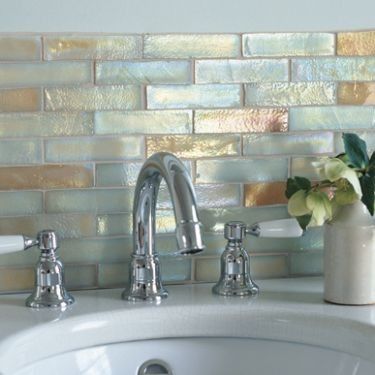
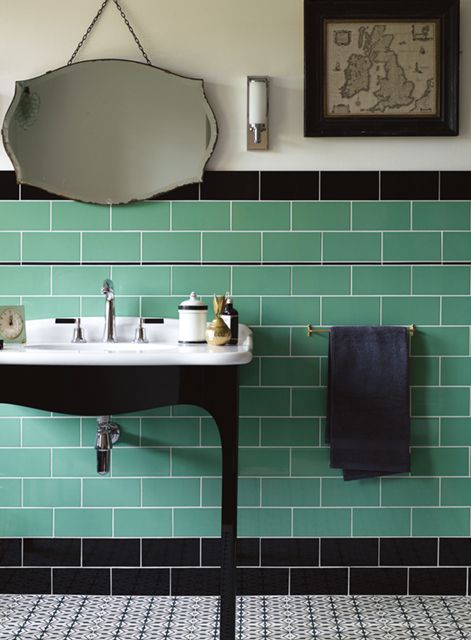
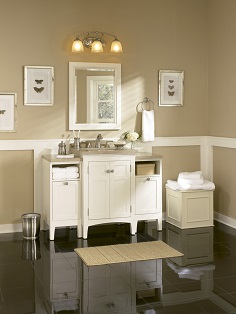
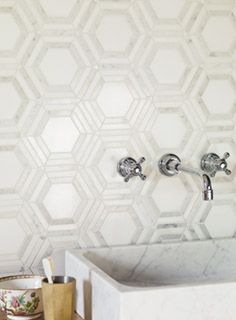
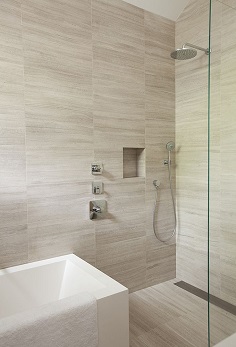

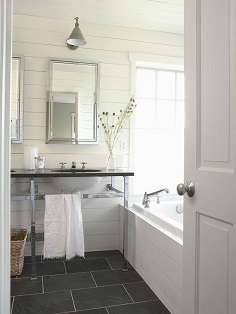

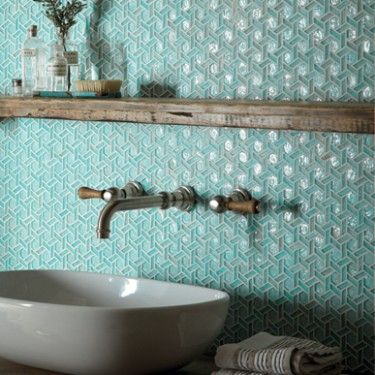
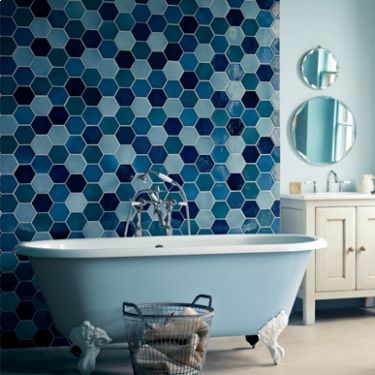
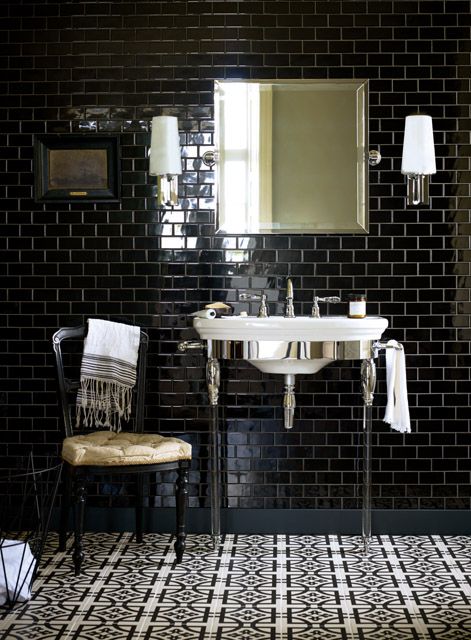


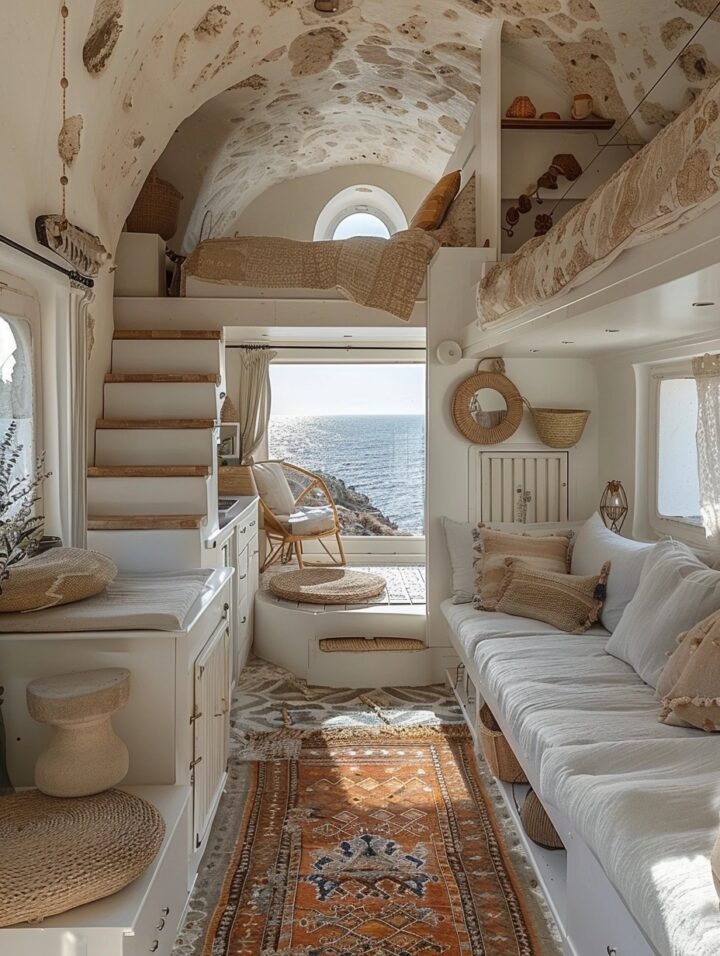

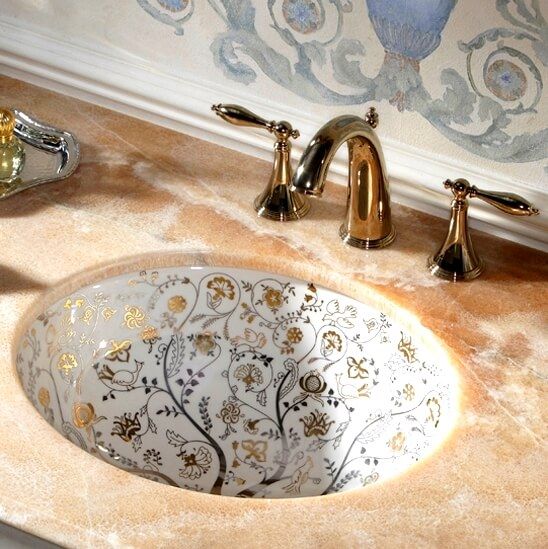
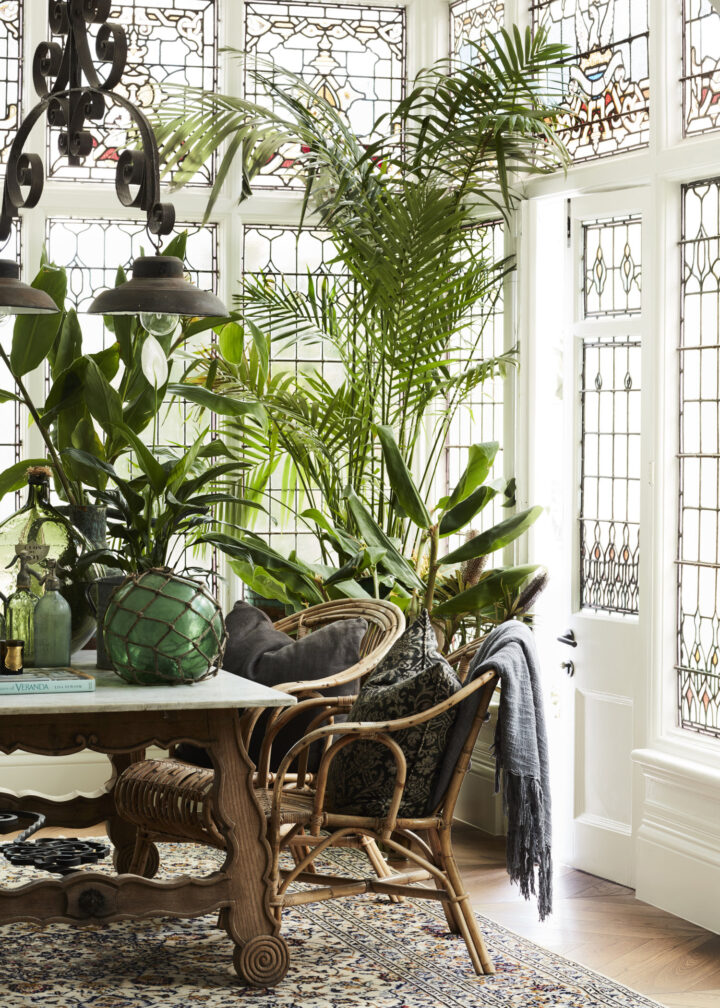

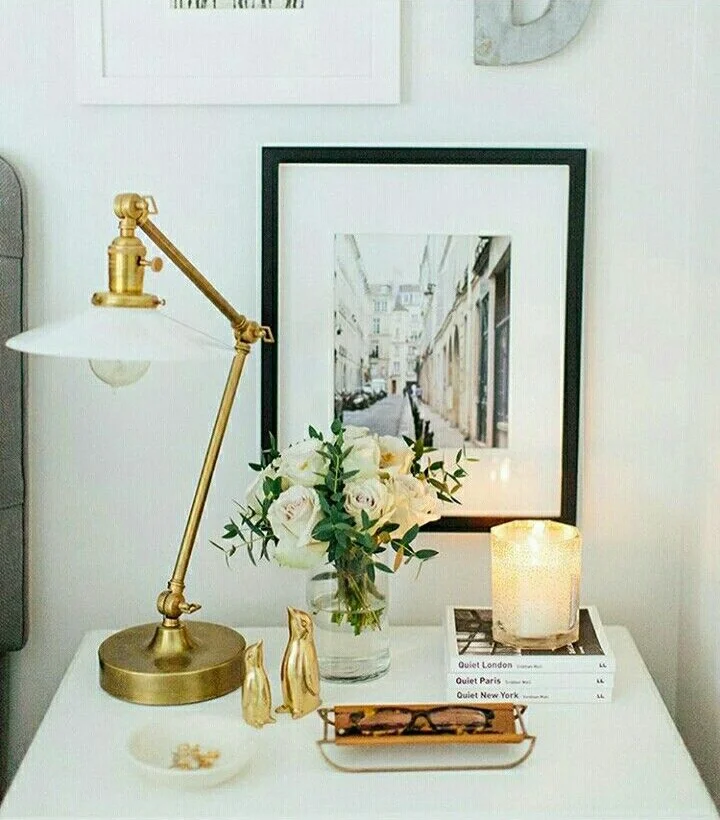

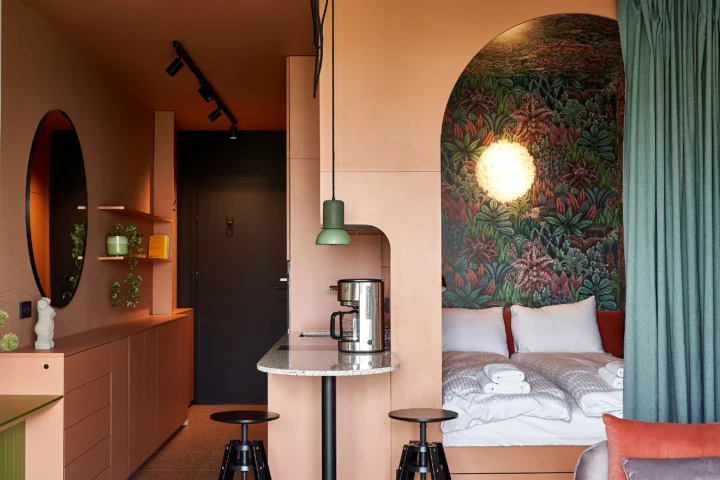

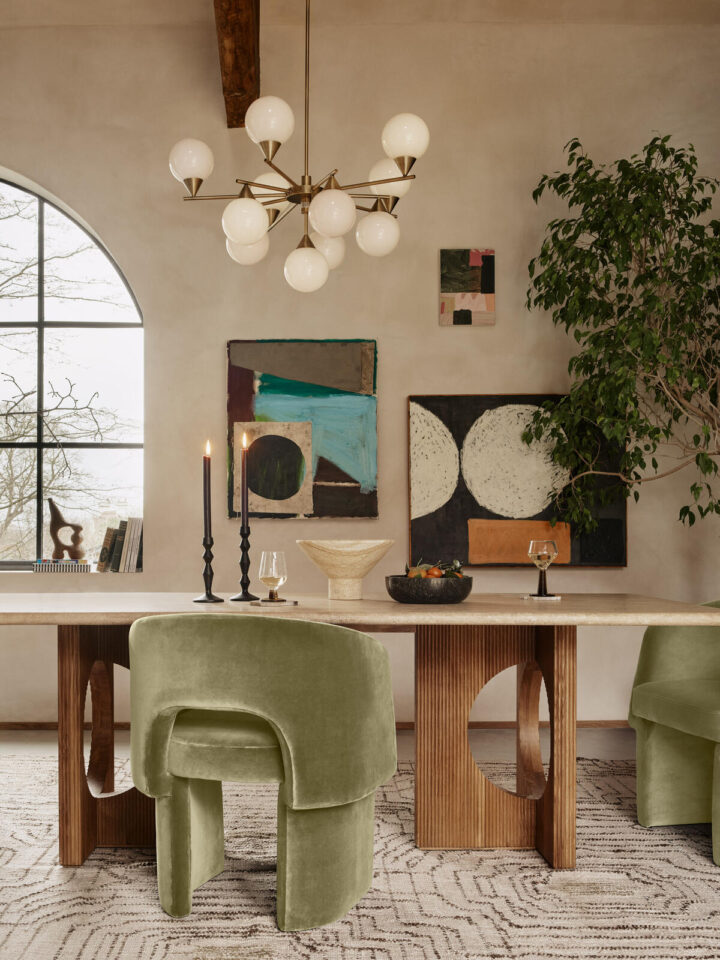
Thanks for posting the tile guides. This will added to my library.
Dear Ms. Divani,
I absolutely love the iridescent rectangular tile backsplash in the first picture on this site. Please let me know the manufacturer, name or distributor of the tile.
Thanks yo so much,
Karen Fischer